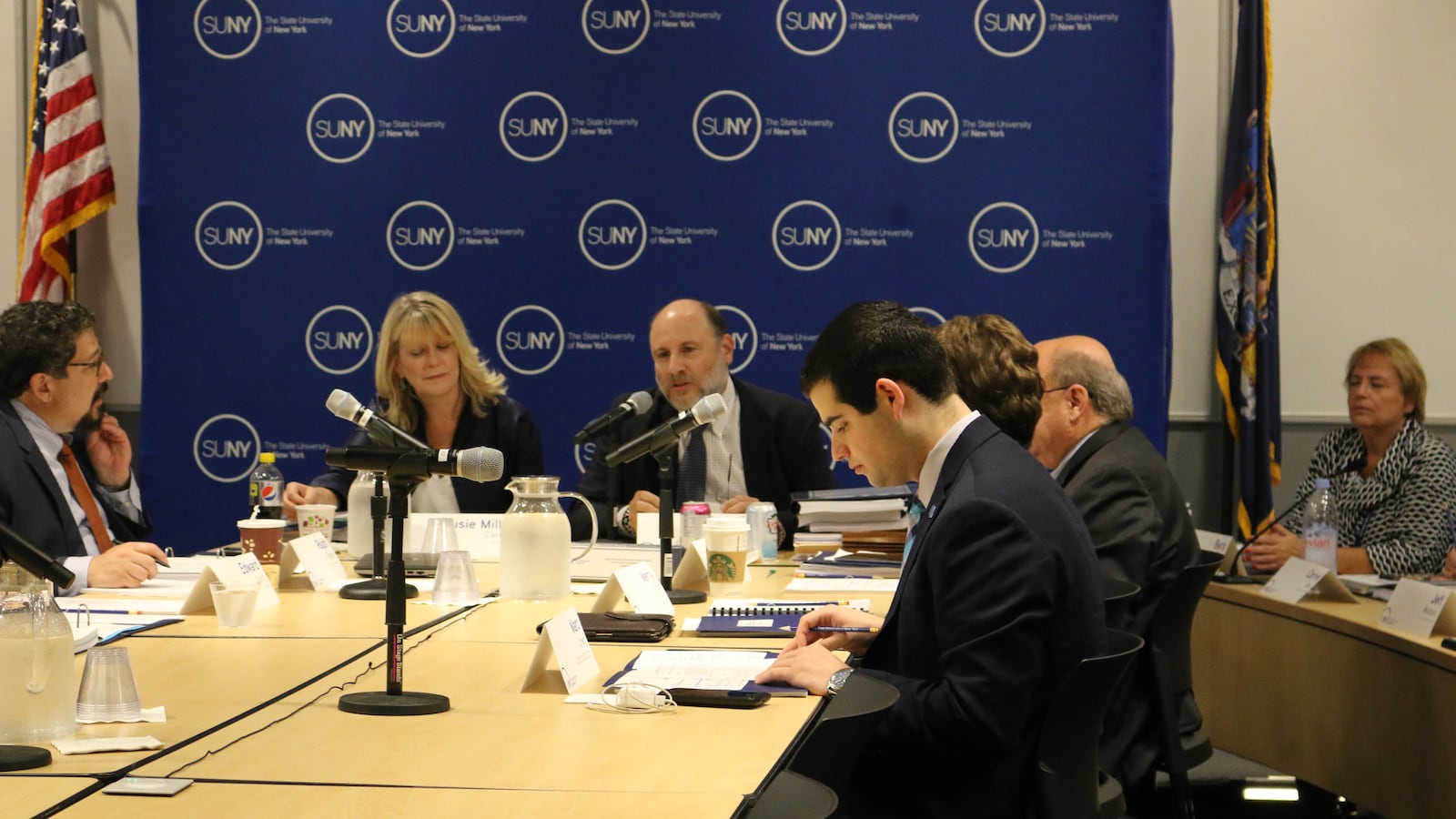With a wave of new approvals Monday, New York City has all but reached the limit on the number of charter schools that can open, likely ending the sector’s growth for now.
Under state law, just seven spots remained for charter schools to open. On Monday afternoon, the Board of Trustees for the State University of New York approved 13 applications. The board chose seven that should be allowed to open immediately and gave “pre-approval” to six others. That would allow those schools to open if the legislature raises the cap in the future.
Among the schools that were approved is KIPP Beyond Charter School, an “intentionally diverse” middle school that represents a departure for a network that has up to now focused almost exclusively on serving students of color. Also included: two charter schools in the “Zeta” network, part of a new chain launched by Emily Kim, a former top official at Success Academy.
The meeting marked a pivotal moment for the city’s charter sector. As the cap has loomed, the state’s two charter authorizers have raced to sign off on schools to fill the final slots. Meanwhile, charter advocates have been lobbying lawmakers to raise the cap — but with the state legislature now controlled fully by Democrats, that possibility seems dim. Some of those advocates lamented what Monday’s approvals could mean for the sector.
“Without a cap lift in Albany, today will be remembered as the day when progress in providing this city’s students the great public education that they deserve was arbitrarily halted,” James Merriman, CEO of the NYC Charter School Center, said in a statement.
There could be ways to work around the cap. Joseph Belluck, chair of the board’s charter schools committee, said the “easiest fix” would be for the state to allow New York City to use the 99 charter school spots left for other places in the state.
“The only thing I can say about it is, it’s frustrating as the authorizer to have 13 qualified applicants and only have seven of them get charters,” Belluck said.
On the other side of the debate, some community members and elected officials spoke out in advance of the vote. One of those people was Shannon Waite, a member of the city’s Panel for Educational Policy and a District 3 parent.
“I myself and the other 12 people on the panel are consistently asked — and these are completely reasonable questions — about why we persistently co-locate and cite charter schools and public schools and create this divisive system in schools, where you go on one side of the school and it’s beautiful, and you go on the other side of the school and it’s ‘meh,’” Waite said.
Meanwhile, some within the charter sector raised questions about whether the schools approved in the Zeta network, which were approved as “replications” of existing charters, have enough of a track record given that the network launched its first two schools this school year.
Steve Zimmerman, director of the Coalition of Public Independent Charter Schools, was critical of the decision to approve schools that are part of existing networks. “You would really hope that [charter authorizers] would work to develop new models of teaching and learning,” he said. “That’s what this whole model was supposed to be about.”
Susie Miller Carello, the executive director of the SUNY Charter Schools Institute, said she was comfortable with using data from less than one school year to judge Zeta. The institute, she said, looked at the same qualitative data it considers for “all of our schools.”
Monday’s vote also laid out uncharted territory since the Board of Regents — the other entity with the power to approve new charters — is considering its own set of five applications.
Although the Regents have no formal power to block SUNY-approved charter schools, they could still theoretically delay the process by voting them down, sending them back with recommended changes, or taking no action at all (though after 90 days the charters would automatically be issued). It was not clear if any of those delays could, in theory, allow any of the five charter applications under consideration by the Regents to displace any of the SUNY charters that got the green light on Monday.
State and SUNY officials said the Regents could not keep them from using the remaining charter slots since they voted to approve schools first.
It was too early to say if the Regents would plan on approving the applications or just let the 90-day timeframe play out, state officials said.
Here is the list of charter schools approved today, with those that got approval to open in bold:
Amber Charter School III (Manhattan)
Family Life Academy Charter School IV (Bronx)
Zeta Charter School – New York City 3 (Bronx)
Zeta Charter School – New York City 4 (Bronx)
KIPP Beyond Charter School (Manhattan)
Brooklyn Ascend Charter School 6 (Brooklyn)
Girls Preparatory Charter School of the Bronx II (Bronx)
Central Queens Academy Charter School II (Queens)
Math, Engineering, and Science Academy (MESA) Charter High School 2 (Brooklyn)
Kwenda Collegiate Girls Charter School (Brooklyn)
Bedford Stuyvesant New Beginnings Charter School 2 (Brooklyn)
Minisink Charter School (Manhattan)
Haven Charter High School (Bronx)

